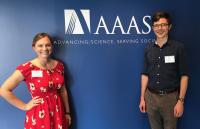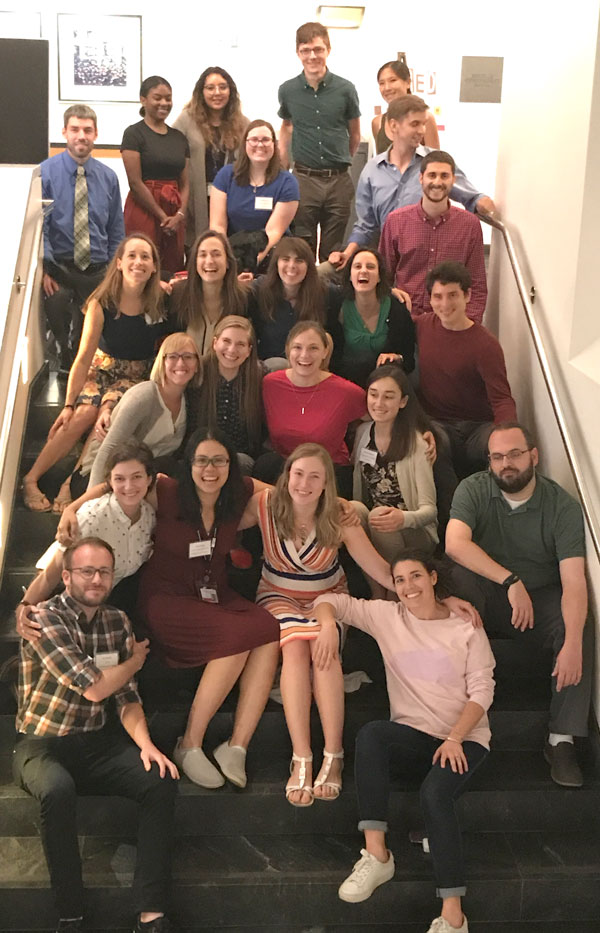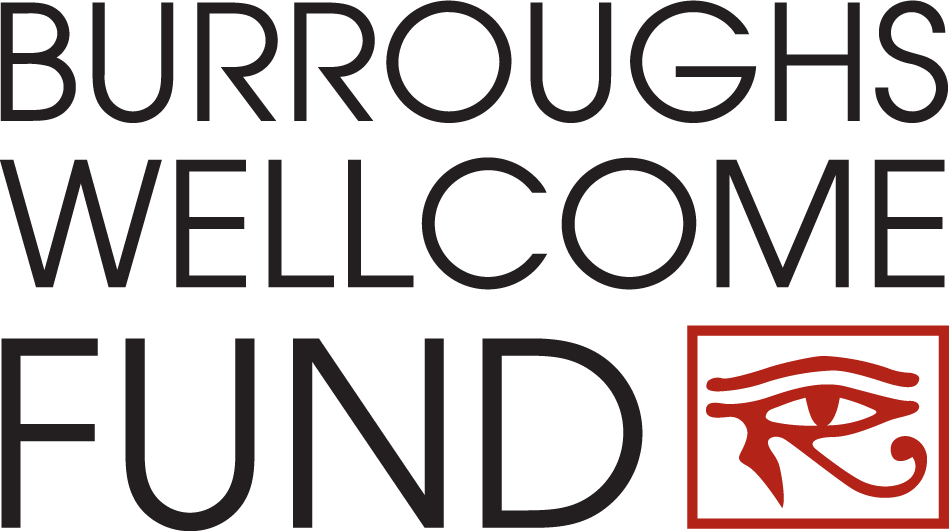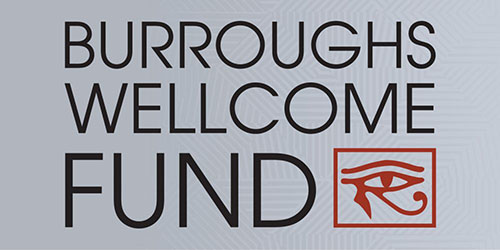A Conversation with the 2018 AAAS Mass Media Fellows
Jonathan Lambert and Sadie Witkowski
The American Association for the Advancement of Sciences Mass Media Fellows program has been connecting scientists to science journalism for the past four decades. The Burroughs Wellcome Fund has been a proud sponsor of the program since 1998 and has sponsored 40 fellows.
This year’s fellows: Jonathan Lambert, a neurobiology and behavior graduate student at Cornell, worked for the Dallas Morning News and Sadie Witkowski, a psychology graduate student at Northwestern, worked for Voice of America. Their productivity is impressive. During the 10-week fellowship, Mr. Lambert published 13 stories and Ms. Witkowski published 20 unique stories, many of them with multimedia components. Read Ms. Witkowski’s and Mr. Lambert’s top five stories from the summer.
I had the chance to talk with the fellows at the AAAS Mass Media wrap-up in August.

On applying for the scholarship
Jonathan: I have kind of a weird background. I have been away from graduate school for a bit because of a concussion. I actually wrote a piece on my experience that made the front page of the Sunday Arts and Life section. I’d been working on a science podcast for kids as a way to keep my brain engaged, called Brains On. It’s a science podcast from the Minnesota Public Radio. Kids submit their questions and we go wherever the answers take us. Kids have the best questions, because they’re just curious about everything. It showed me that pure curiosity is a great engine for going to interesting places. I wanted to do more writing because I’ve always liked writing and I was hoping to find something that could give me experience writing and also give me a better idea if it was something that I wanted to keep doing.
Sadie: I took a skills and careers class in science writing at Northwestern and it was an optional class that they allow graduate students to take to kind of get them to practice writing about their science. Usually more in a public releations bent in like the university is training the scientists to write their own PR articles…I thought it was a cool experience and I realized that freelancing might be fun, but I was not, I felt really nervous about pitching…Because if I don’t like it, I want to know now. I mean, I already spent several years in grad school and I would like to know my next route. It was really useful to have a chance to just jump in. I just let myself be totally engulfed in what it would be like to live this as a day to day life so that I had a real sense of if I would love or hate it and I love it.

On what they learned
Jonathan: I went into this summer a little apprehensive about working for a local news site, just because that’s not where I get my science news. But I am totally on the bandwagon now of local science reporting, because I think it’s a way to connect people who don’t normally read about science and get them interested in science. One of my favorite stories that I wrote was about this big neutrino experiment. I imagine that a lot of the people who opened the paper and saw that story had never even heard of a neutrino. But I hope that I wrote about it in a way that drew in readers who wouldn’t normally be interested in particle physics, and exposed them to a fascinating experiment that could answer fundamental questions about the universe.
It is fun to think that my work this summer hopefully got people a little more excited about science than they were before. Or maybe even just learned a little bit more about science. And so I learned that you can always find sort of a local angle to just open the door a little bit and then the coolness of the science and the people’s innate curiosity will take over from there.
Sadie: I was very lucky that I got to work with a lot of different media forms. I often got took one story and would do it as a written piece, as a radio piece, and as a broadcast piece. I went into the fellowship with a love of radio, but always kind of viewed it more in the podcast style where it’s just people talking and not a lot of editing involved. I didn’t realize the amount of writing skills needed for radio and broadcast. I learned writing for those mediums is really hard and really fun because it’s hard.
With radio I had to learn how to make sure that you weren’t always just listening to the narrator’s voice, that you were cutting between people, that there were good quotes, that there were audible quotes, that it still flowed even though you had maybe three or four different people in a two minute piece. In broadcast, I realized that you need to be showing what you’re trying to talk about otherwise people get confused. You can’t put in as much information, but it ends up being so much richer that people remember it. So it was really cool to take one story and expand and play with it when I wrote it and then when I actually had to do the broadcast, figure out what is the core message that I want to distill, that I can show people that will stick with them. And that was a really cool experience I don’t think I could have had anywhere else.
On their biggest challenge
Sadie: My biggest challenge was trying to understand my audience. Voice of America is international so it was kind of hard to figure out how to tell stories that I knew were going to have multiple people interested in, that would be translated into other languages, that would be local news stories for Thailand, but also interesting pieces to people in Africa, essentially. And so it took me a while to figure out what kind of pitches made sense and how to cover stories using appropriate language that if it was translated into another language. I couldn’t use puns because they just don’t make sense in another language. So that was a struggle that took a while to kind of click.
Jonathan: The biggest challenge for me was knowing when to stop over-explaining. Knowing what’s the minimum amount of explanation that’s still going to get the bulk of the idea across in a way that people are interested in and can understand. My natural impulse is to talk about all the cool little details. But, you can’t really do that in a newspaper story and so by the end of the summer I felt like I was getting a lot better or that Id’ gotten a lot better at being able to self-edit myself and not turn a draft into my editor and have him say “this is cool but… maybe let’s lose this graph because we don’t really need to know that.” I feel like I was better able to tell what needed to be in there and keep out the rest.
On the experience
Jonathan: It has been just a tremendous opportunity that I don’t think I would be able to get anywhere else, because I feel like I both learned a ton about just how journalism works in a very short period of time and I gained more confidence in my ability to write compelling and understandable stories about science. After just 10 weeks, which is not that long of a time I feel like I have a lot more confidence than I can do this, that it is important to do, and that I like doing it.
Sadie: I was very interested in starting this program, but I was afraid that I would love it and I would be terrible at it, or I would hate it and I would be terrible at it. And just because I’ve done a lot of science communication and most of it’s not written… so I was very anxious and I just had the most amazing experience being able to figure out how to write effectively and how to keep ideas concise but good explainers. I couldn’t have had a better or more productive summer…And I am absolutely convinced that I will always have science communication and science writing as part of my future career no matter what.


Comments are closed.